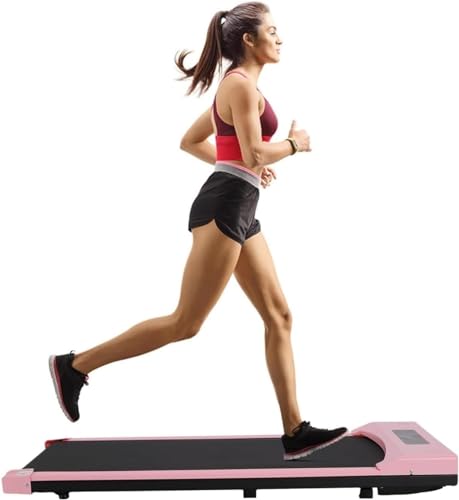9 . What Your Parents Teach You About Treadmill Electricity
페이지 정보

본문
treadmill electricity - Https://drugsail40.werite.net/the-unspoken-secrets-of-inexpensive-electric-treadmills,
Although treadmills don't consume more electricity than other appliances like air dryers and washing machines, they still contribute to the overall energy bill of your home. It is important to understand the energy use of treadmills to help you make smart decisions regarding your purchase.
Find the treadmill's wattage ratings in the user's manual or on its label. Then multiply the wattage number by the number of hours you use it each week.
Origins
Treadmill electricity is a component of your total power consumption when using fitness equipment. Some factors influence how much your treadmill consumes its power, such as the size of its motor and the speed at which you exercise. You can reduce the amount of energy used by your treadmill by shutting off the machine when you're not working out and ensuring it is maintained regularly to ensure optimal performance. You can reduce the energy usage of your treadmill by running uphill instead of on flat ground.
Treadmills are utilized for leisure and work. They were originally used as a method of punishment for prisoners who were sentenced to hard labor. They would constantly walk on an enormous hamster wheel to provide power to machines that ground grain or powered water pumps. These early models, despite being primarily utilitarian, were not free of flaws. For instance, prisoners often suffered from heat stroke and other health problems as a result of the exhausting work required on machines.
Modern treadmills have evolved from their utilitarian origins and now generate energy when used. The treadmills like the Verde from SportsArt harness the energy created as you walk or run on the treadmill and turn it into electricity that can be stored in batteries. When the battery is fully charged, you can use it to power small appliances, such as lights or a fan.
The type of treadmill you select will impact the amount of power it requires. For instance, treadmills designed for intense workouts have larger motors that require more power to move their belts. Electricity consumption is also affected by the speed and incline of your treadmill. Exercises that are more intense will require more power, therefore it is essential to monitor your treadmill's use to ensure that it is within your budget for utility costs.
Do you have the capacity to generate enough energy from treadmill exercise to power a device? It's possible, but not much. A trained athlete could generate up to 3/4 HP or 500-600 Watts in terms of electrical power. This could suffice to power a small fan or even a laptop however it's not enough to power a household or commercial facility.
Motors
If your treadmill is powered by electricity, it uses a motor to convert the electrical energy into kinetic energy for moving the belt. The majority of treadmills with electric motors have two separate motors -one drive motor and an incline motor. The quality of each motor will impact your workout experience and longevity be sure to pay attention to the specs listed for these components prior to making your purchase.
The horsepower (HP) is the most crucial spec for treadmill motors. This measurement indicates the amount of power a motor produces at its maximum. It's easy to be tempted by a high HP rating. However continuous duty (CHP) is an accurate measurement. It's the longest time that a motor can be at its most efficient without overheating. Treadmills that have a higher CHP are usually more durable and last longer.
Take into consideration your budget and the intended use when deciding what kind of motor you want to purchase. In general, bigger and better-quality motors will need more money to purchase and run. However, this extra cost can be offset by reducing the cost of energy. If you're considering a time-of-use rate program, that has different rates during the day, it's more important to concentrate on the treadmill's energy use.
It is essential to not share your home's electric treadmills power with other appliances connected to the same circuit. This can cause your treadmill trip a circuit breaker, and it could cause damage to it. Instead, use a dedicated outlet for your treadmill and ensure it's properly wired.
The motors in your treadmill utilize AC/DC electricity to turn the crank that drives the belt. The AC motors are more expensive, but they are more smooth and provide quicker response to changes in speed or incline. A treadmill equipped with a superior DC motor will also decrease the amount of noise and maintenance required. If you're not sure about the type of motor to buy, look over the warranty and compare models with similar features.
Electronics
The electronic components of a treadmill regulate the running of its motor. Potentiometers, switches and PCB electronic components are used to regulate the speed and force. This allows the treadmill to mimic running, walking, and running exercises. Treadmills that have incline options can also adjust the speed and force of the motor to simulate uphill running.
The size of the motor on the treadmill and the settings for the console could all impact the amount of electricity consumed. The treadmill belt will need more power to move if the user is heavier. Treadmills that have incline levels that simulate running uphill will require more energy than treadmills without this feature. The energy consumption will increase if you alter the settings on your console.
In general, treadmills use more energy when users are running faster and for longer durations. A calorie counter or other features on a treadmill could be a factor in increased energy consumption.
The charging process for a phone via the USB cable is slower than walking and generating enough kinetic power. The system works with any standard cell phone regardless of the operating voltage.
The owner of the treadmill can lower the amount of electricity used by their treadmill by shutting off the treadmill when it is it is not being used. They can also check the machine for signs of wear and tear, which could cause it to use more electricity than necessary.
You can also reduce the energy consumption of your treadmill by operating it at "off-peak hours", which are usually during the night. These are the times when electricity prices are lower. This could save you money, particularly if you are on a rate plan that charges different rates based on the time of day. Solar panels can also be purchased by homeowners to generate their pure electricity. This will drastically reduce the dependence on the grid as well as fluctuating electricity prices. In the long term this could result in significant savings for homeowners.
Workouts
Treadmills and elliptical machines permit users to run, walk or run indoors, enabling you to keep fit even when the weather isn't cooperating. They use electricity to run their motors and displays, but the amount can vary based on your exercise duration and frequency. The wattage rating of the treadmill is listed in the user manual or on the label. Divide the number by the number of days in the month and multiply by the number hours you are using the treadmill in a typical day. This will give you your daily energy consumption in kilowatt hours (kWh). Then multiply the number of kWh used by your utility provider's cost-per-kilowatt-hour rate to figure the total cost of operating your fitness equipment.
The speed and incline setting you select can also affect the treadmill's energy consumption. Running at higher speeds requires more power from the treadmill's motor, and using an incline setting simulates uphill running, which can increase the amount of energy consumed. The amount of energy utilized by the treadmill is also dependent on the weight of the user as the motor must work harder to move the belt when it is heavier.
A treadmill that is properly maintained can reduce the amount of electricity used. Check the belt's lubrication regularly to make sure it's properly oiled and replace worn or damaged bearings to prevent excessive wear and tear on the motor. Consider upgrading your treadmill with an energy-efficient motor if you are using it for extended periods of time.
 After you've finished exercising, unplug or turn off your treadmill, if connected. Letting them remain connected and running in the background could add to your household's overall best electric treadmills under 200 bill, especially in the case of a powerful treadmill. You can reduce unnecessary energy consumption by using a smart plug or energy-efficient treadmill to automatically turn off your equipment. If you want to reduce static electricity that can build up between your body and your treadmill or elliptical, place a humidifier in the vicinity of your workout space to increase the relative humidity.
After you've finished exercising, unplug or turn off your treadmill, if connected. Letting them remain connected and running in the background could add to your household's overall best electric treadmills under 200 bill, especially in the case of a powerful treadmill. You can reduce unnecessary energy consumption by using a smart plug or energy-efficient treadmill to automatically turn off your equipment. If you want to reduce static electricity that can build up between your body and your treadmill or elliptical, place a humidifier in the vicinity of your workout space to increase the relative humidity.
Although treadmills don't consume more electricity than other appliances like air dryers and washing machines, they still contribute to the overall energy bill of your home. It is important to understand the energy use of treadmills to help you make smart decisions regarding your purchase.
Find the treadmill's wattage ratings in the user's manual or on its label. Then multiply the wattage number by the number of hours you use it each week.
Origins
Treadmill electricity is a component of your total power consumption when using fitness equipment. Some factors influence how much your treadmill consumes its power, such as the size of its motor and the speed at which you exercise. You can reduce the amount of energy used by your treadmill by shutting off the machine when you're not working out and ensuring it is maintained regularly to ensure optimal performance. You can reduce the energy usage of your treadmill by running uphill instead of on flat ground.
Treadmills are utilized for leisure and work. They were originally used as a method of punishment for prisoners who were sentenced to hard labor. They would constantly walk on an enormous hamster wheel to provide power to machines that ground grain or powered water pumps. These early models, despite being primarily utilitarian, were not free of flaws. For instance, prisoners often suffered from heat stroke and other health problems as a result of the exhausting work required on machines.
Modern treadmills have evolved from their utilitarian origins and now generate energy when used. The treadmills like the Verde from SportsArt harness the energy created as you walk or run on the treadmill and turn it into electricity that can be stored in batteries. When the battery is fully charged, you can use it to power small appliances, such as lights or a fan.
The type of treadmill you select will impact the amount of power it requires. For instance, treadmills designed for intense workouts have larger motors that require more power to move their belts. Electricity consumption is also affected by the speed and incline of your treadmill. Exercises that are more intense will require more power, therefore it is essential to monitor your treadmill's use to ensure that it is within your budget for utility costs.
Do you have the capacity to generate enough energy from treadmill exercise to power a device? It's possible, but not much. A trained athlete could generate up to 3/4 HP or 500-600 Watts in terms of electrical power. This could suffice to power a small fan or even a laptop however it's not enough to power a household or commercial facility.
Motors
If your treadmill is powered by electricity, it uses a motor to convert the electrical energy into kinetic energy for moving the belt. The majority of treadmills with electric motors have two separate motors -one drive motor and an incline motor. The quality of each motor will impact your workout experience and longevity be sure to pay attention to the specs listed for these components prior to making your purchase.
The horsepower (HP) is the most crucial spec for treadmill motors. This measurement indicates the amount of power a motor produces at its maximum. It's easy to be tempted by a high HP rating. However continuous duty (CHP) is an accurate measurement. It's the longest time that a motor can be at its most efficient without overheating. Treadmills that have a higher CHP are usually more durable and last longer.
Take into consideration your budget and the intended use when deciding what kind of motor you want to purchase. In general, bigger and better-quality motors will need more money to purchase and run. However, this extra cost can be offset by reducing the cost of energy. If you're considering a time-of-use rate program, that has different rates during the day, it's more important to concentrate on the treadmill's energy use.
It is essential to not share your home's electric treadmills power with other appliances connected to the same circuit. This can cause your treadmill trip a circuit breaker, and it could cause damage to it. Instead, use a dedicated outlet for your treadmill and ensure it's properly wired.
The motors in your treadmill utilize AC/DC electricity to turn the crank that drives the belt. The AC motors are more expensive, but they are more smooth and provide quicker response to changes in speed or incline. A treadmill equipped with a superior DC motor will also decrease the amount of noise and maintenance required. If you're not sure about the type of motor to buy, look over the warranty and compare models with similar features.
Electronics
The electronic components of a treadmill regulate the running of its motor. Potentiometers, switches and PCB electronic components are used to regulate the speed and force. This allows the treadmill to mimic running, walking, and running exercises. Treadmills that have incline options can also adjust the speed and force of the motor to simulate uphill running.
The size of the motor on the treadmill and the settings for the console could all impact the amount of electricity consumed. The treadmill belt will need more power to move if the user is heavier. Treadmills that have incline levels that simulate running uphill will require more energy than treadmills without this feature. The energy consumption will increase if you alter the settings on your console.
In general, treadmills use more energy when users are running faster and for longer durations. A calorie counter or other features on a treadmill could be a factor in increased energy consumption.
The charging process for a phone via the USB cable is slower than walking and generating enough kinetic power. The system works with any standard cell phone regardless of the operating voltage.
The owner of the treadmill can lower the amount of electricity used by their treadmill by shutting off the treadmill when it is it is not being used. They can also check the machine for signs of wear and tear, which could cause it to use more electricity than necessary.
You can also reduce the energy consumption of your treadmill by operating it at "off-peak hours", which are usually during the night. These are the times when electricity prices are lower. This could save you money, particularly if you are on a rate plan that charges different rates based on the time of day. Solar panels can also be purchased by homeowners to generate their pure electricity. This will drastically reduce the dependence on the grid as well as fluctuating electricity prices. In the long term this could result in significant savings for homeowners.
Workouts
Treadmills and elliptical machines permit users to run, walk or run indoors, enabling you to keep fit even when the weather isn't cooperating. They use electricity to run their motors and displays, but the amount can vary based on your exercise duration and frequency. The wattage rating of the treadmill is listed in the user manual or on the label. Divide the number by the number of days in the month and multiply by the number hours you are using the treadmill in a typical day. This will give you your daily energy consumption in kilowatt hours (kWh). Then multiply the number of kWh used by your utility provider's cost-per-kilowatt-hour rate to figure the total cost of operating your fitness equipment.
The speed and incline setting you select can also affect the treadmill's energy consumption. Running at higher speeds requires more power from the treadmill's motor, and using an incline setting simulates uphill running, which can increase the amount of energy consumed. The amount of energy utilized by the treadmill is also dependent on the weight of the user as the motor must work harder to move the belt when it is heavier.
A treadmill that is properly maintained can reduce the amount of electricity used. Check the belt's lubrication regularly to make sure it's properly oiled and replace worn or damaged bearings to prevent excessive wear and tear on the motor. Consider upgrading your treadmill with an energy-efficient motor if you are using it for extended periods of time.
 After you've finished exercising, unplug or turn off your treadmill, if connected. Letting them remain connected and running in the background could add to your household's overall best electric treadmills under 200 bill, especially in the case of a powerful treadmill. You can reduce unnecessary energy consumption by using a smart plug or energy-efficient treadmill to automatically turn off your equipment. If you want to reduce static electricity that can build up between your body and your treadmill or elliptical, place a humidifier in the vicinity of your workout space to increase the relative humidity.
After you've finished exercising, unplug or turn off your treadmill, if connected. Letting them remain connected and running in the background could add to your household's overall best electric treadmills under 200 bill, especially in the case of a powerful treadmill. You can reduce unnecessary energy consumption by using a smart plug or energy-efficient treadmill to automatically turn off your equipment. If you want to reduce static electricity that can build up between your body and your treadmill or elliptical, place a humidifier in the vicinity of your workout space to increase the relative humidity.
- 이전글The Primary Reason You need to (Do) Best Shop 24.08.18
- 다음글20 Fun Facts About Landrover Key Replacement 24.08.18
댓글목록
등록된 댓글이 없습니다.




